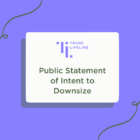Is Binding Supposed to Hurt?

Generally speaking, chest binding shouldn’t hurt. Pain or injury from binding likely means you need to adjust how you bind. Some methods have fewer risks than others. Here’s what you need to know:
- Duration: Binding for extended periods may cause unwanted side effects like loss of elasticity in the tissue, soreness, and rashes. Limit binding to 6-8 hours, take your binder off at night, and take at least one day off a week from binding. ¹ ²
- Activity: When you can, avoid or limit the time you wear your binder while exercising. This is because your body needs unrestricted breathing for intense physical activity.
- Sizing: Using a binder that is too small can cause damage to the skin and ribs, shortness of breath, chest pain, back pain, and overheating.
- Materials: Don’t use duct tape or bandages to bind—these materials are considered unsafe because they’re most prone to harming your body
Everyone’s body is different, so binding can impact people differently. Similarly, the solutions to issues or discomfort caused by binding will differ for everyone. That’s why it’s essential to listen to your body—if you’re experiencing pain, discomfort, or other issues, even if you’re taking steps to bind safely, talk to a healthcare provider you trust.
Binding helps many folks feel more comfortable in their bodies, but that doesn’t mean it’s for everyone. It’s okay to take your time trying different ways to bind, and it’s also okay to not bind. If you don’t want to risk the chance of pain or injury, you can still use alternative methods to reduce the appearance of your chest.
For more information on how to bind safely, visit our Binding Guide and TikTok videos on what to avoid when binding and safer ways to bind your chest.
Stay safe,
León at Trans Lifeline
1 Chest Binding: Use, Techniques, Side Effects
2 Health impact of chest binding among transgender adults: a community-engaged, cross-sectional study
Recent
- Press Release: Trans Week of Visibility Streamathon

- An End-of-year Message from Trans Lifeline

- Navigating Change: Trans Lifeline Initiaties Restructure for Long-Term Resilience

- End-of-Year Pause in Hotline Operations & New Hours in 2024

- Tucking Guide for Trans Femmes, Trans Women & AMAB







